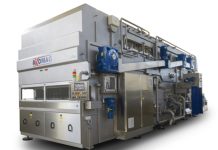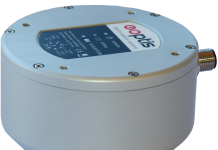 X-ray microtomography for the analysis of structural changes in bread during baking.
X-ray microtomography for the analysis of structural changes in bread during baking.
Microwave-convective baking is an interesting alternative to traditional baking process. It combines the advantages from both technologies, to obtain quality products with improved energy performance. In this context, a recent study by a group of international researchers (Schott et al., 2023) proposed an innovative approach for characterizing the evolution of the microstructure of bread during baking using synchrotron X-ray microtomography (SRμCT).
In particular, experimentation allowed the characterization and comparison of the following three cooking technologies: (1) convective heating, (2) microwave heating and (3) combined treatment. The system provided a workflow for automatic batchwise image processing and analysis of 3D bread structures and its main properties. The results showed that the porosity, mean pore volume and mean pore coordination number increase with time, and that the mean local cell wall thickness decreases with time.
In addition, it has been observed that small, isolated pores connect with the larger and more connected pores as a function of time. In conclusion, the authors argue that this technique opens new opportunities for understanding the structural changes in bread during baking, to be used for the development of energy-efficient baking technologies. However, further analysis is necessary to investigate more carefully the statistical significance of differences not only related to the type of process, but also to the type of bread.
Ion-ozone cavitation technology for bread production
The food industry requires technologies that can also use flour from whole-ground wheat grain from non-premium wheat varieties for the development of quality bakery products. In this context, the objective of a recent study, carried out by a group of Kazakh researchers (Iztayev et al., 2023), was to evaluate the use of ion-ozone cavitation for the accelerated production of bread dough from third-grade whole-wheat flour.
In particular, during the process, the samples are placed in the kneader where they are processed for 5 minutes. Then, ion-ozonized cavitation air is fed into the kneading chamber under a pressure of 2 atm, and the dough is beaten for 3 minutes. The resulting samples are then baked at 220°C for 25-30 minutes. Finally, the study presents a system of equations that allows to correlate the conditions of the process with certain qualitative parameters of the product (such as dough strength and the bread volume), ensuring its optimization.
In conclusion, the authors point out that the proposed technology is particularly attractive to the sector’s industry, since it allows the production of quality products from non-premium flours, with significant economic benefits. However, further analysis is desirable to assess the effects of this technology on other qualitative parameters of the product, especially sensory ones.
References
Schott et al., Food Research International, 173, 2023, 113283; Iztayev et al., Scientific Reports, 13, 2023, 17937.



